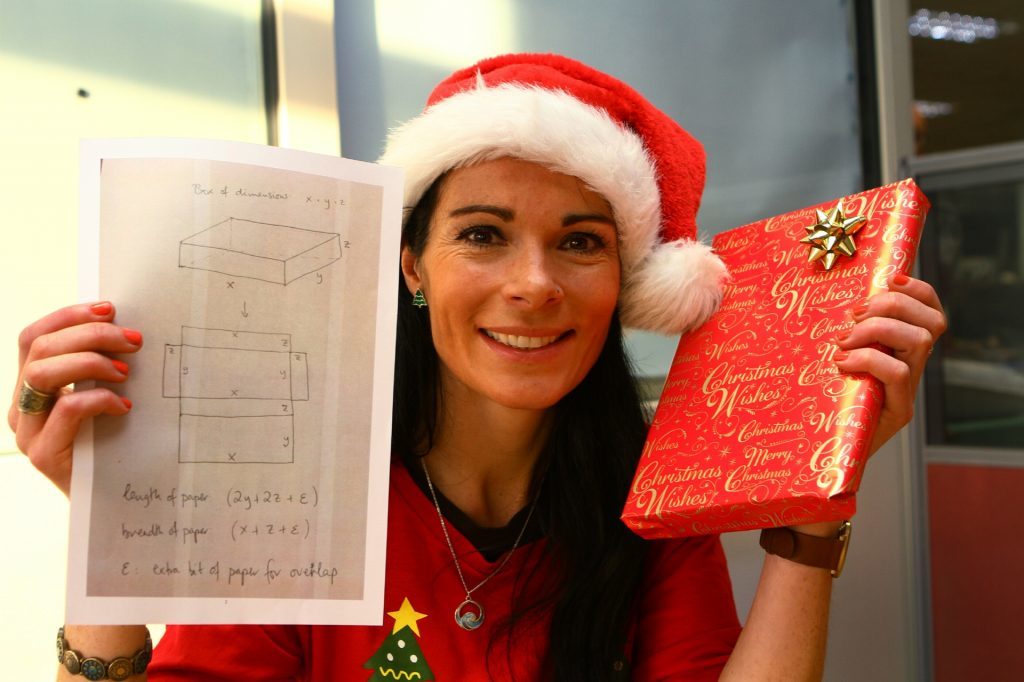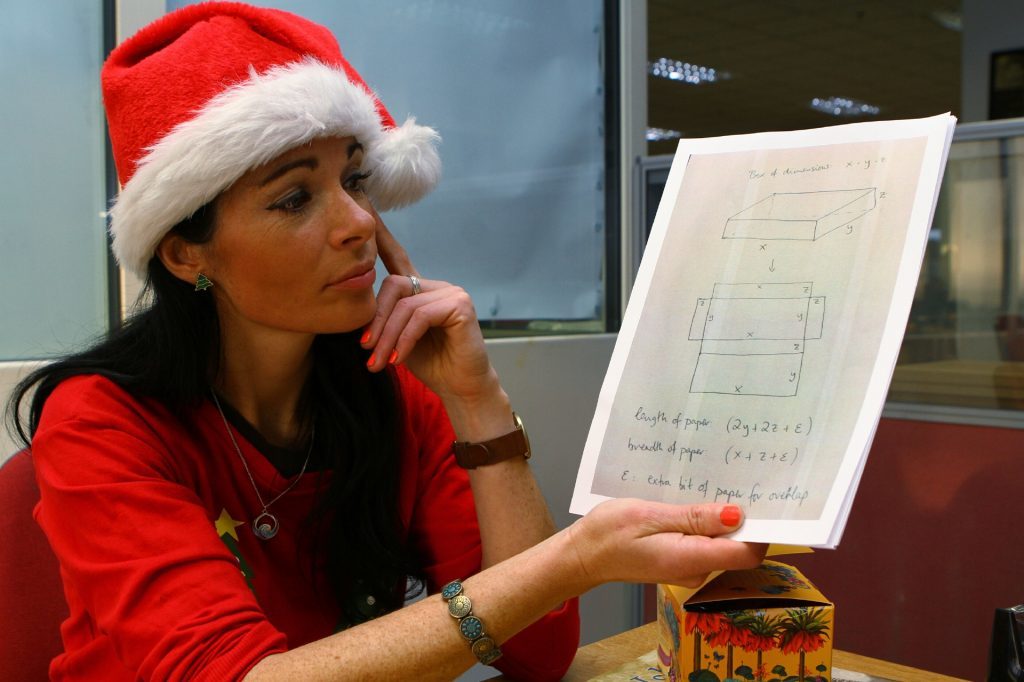Finished all your Christmas present wrapping? If the answer is a big fat no, fret not because Gayle Ritchie has discovered the secret formula to wrapping the perfect pressie
While some folk deem wrapping Christmas presents to be one of the greatest chores of the festive season, I actually love it.
Armed with a glass of prosecco, a roaring fire and some mindless telly on in the background, I can go wrap-crazy for hours.
However, the end result is often something of a disappointment, even if I do add the odd sparkly bow and gift tag to disguise the shoddy workmanship.
No matter my estimations, it seems that all too often, there’s too little paper to go round, or way too much.
Wrapping simple gifts, like books or square objects, is easy enough, but when it comes to odd-shaped toys, ornaments and garden tools, I’m at a total loss.
So, as recipients of my gifts will well know, they often resemble patchwork atrocities rather than things of beauty.
With a good few still to wrap, I turned to present-wrapping guru Professor Mark Chaplain to see if his magic formula could help.
Mark, who is the Gregory Chair of Applied Mathematics at St Andrews University, developed the winning formula using elementary geometry.
“It’s based round wrapping a box because most packages are boxes but the formula can be extended to a cylinder,” he says.
“You work out the minimum amount of paper you’ll need, fold the box into the net of the surface, and calculate the length and breadth of the paper.
“It’s about knowing the dimensions of the box and knowing how long a sheet of paper you’ll need, and how much overlap there will be. You need a bit of wiggle room, but at the same time, you want to minimise the amount of paper required and wrap it neatly so it doesn’t end up looking like a dog’s breakfast with all that surplus.”
It’s all very well mastering the wrapping of a book or a box of chocolates, but what about those awkward objects like balls?
“These are the worst the wrap because they’re spherical,” says Mark.
“You’d need a completely different geometry, otherwise you end up with a big scrunchy bit at the top.
“My advice is to stick the ball or any unusual-shaped gift into a box. That allows for a neater finish, plus the recipient won’t have a clue what’s inside.”
So, to the formula, which I fear, as a non-mathematically minded individual, might be hard to get my head around…
Using the formula breadth = X, length = Y and height = Z, Mark says his wrapped box is: length of paper = 2Y + 2Z + extra (for overlap); breadth of paper = X + Z + extra (for overlap).
In layman’s terms, this means two times length, two times height and a little extra; breadth plus height and a little extra.
You can always add bells, bows and whistles, and rosettes to give it a nice finish, or, in my case, to disguise the messy joins!
As a maths genius, I’m sure Mark must use a measuring tape or ruler to measure his paper, but no – he does it by eye.
“It’s taken years of practice but I’ve got it down to a tee,” he says.
I reckon I need a few more years to get it right. Merry Christmas!











